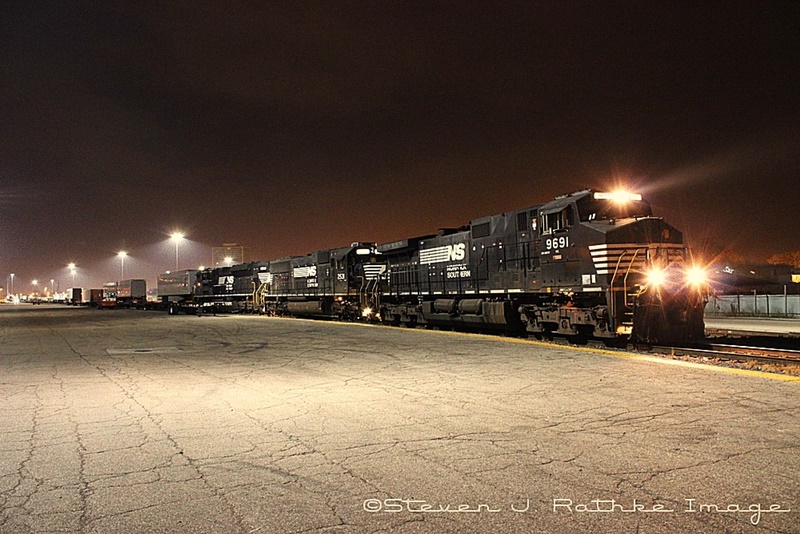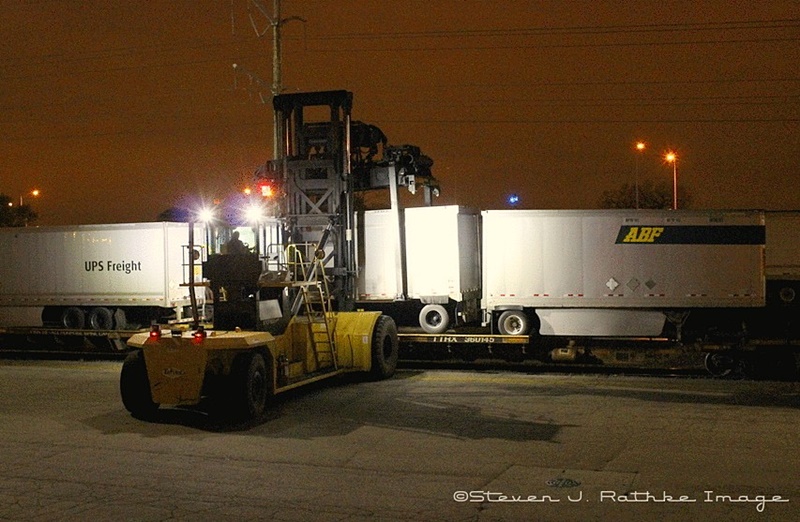
|
While You Were Sleeping Back in the day, my favorite trains to shoot were the morning parade of east bounds on Conrail, especially the "Mail" trains. The Mail moniker harks back to the NYC days, but is still referenced today! At that time, Conrail ran several eastbound intermodals, including the two priority Mails, and freights through town. Barring a derailment or major problem, these trains were in Toledo around the same time. For me, there was nothing better than to be sitting track side in the early morning. Armed with coffee and doughnuts from a local bakery, I would pick a spot and wait for a headlight to break the horizon. If I was lucky, Mother Nature would occasionally provide some light fog or a beautiful sunrise. Those were the days!
Last month, I made a seniority move off of the Toledo West local and bid on a Chicago assigned service turn. Assigned service means that the crew has an assigned train and reporting time at both ends of the railroad. If you didn't know, the vast majority of freight train crews on Class One carriers work on call 24/7. No work schedule whatsoever. That means these employees basically have no idea when they are going to work, when to sleep, how long they will be home, or how long they will be gone. So as you can understand, having assigned service is an absolute game changer regarding quality of life for train crews. They can make plans with family and friends several days in advance, but most importantly they know when to get their rest. Join me as I prepare for a trip east out of Chicago on one of Norfolk Southern's hottest intermodal trains. I hope to provide you with some insight on what occurs on the railroad in the wee hours of the morning. Whether they be a crane operator, inspection personnel, yard crew, or yardmaster, all work hand in hand overnight to keep trains moving. In Chicago, crews no longer stay in hotels as Norfolk Southern built a company dormitory. It is the home away from home for crews from Toledo, Elkhart, and Ft. Wayne. My day begins here at the ungodly hour of 02:45. After finishing my usual morning hygiene routine and packing my grip, I head downstairs at 03:45 to prepare for our 04:00 reporting time. All road crews departing Chicago go on duty at the dorm. We print off our daily bulletin and conduct a job briefing. The bulletin is assigned to each train specifically and all crew members must have a thorough understanding of its contents. Failure to do so may involve violations regarding speed restrictions, work areas, and other important operational directives. Along with the train consist and hazmat billing, it is one of the most important documents on the train. After the briefing, my conductor and I load up our gear into a van which will take us to the yard. While my conductor has already eaten breakfast in the restaurant at the dorm, I choose to stop at the local Dunkin Donuts for my morning coffee. Admittedly, I am and forever will be a "Dunkie Junkie!" Coffee in hand, we head for the yard at 04:10. The "Conrail" side of Norfolk Southern in Chicago has five separate intermodal facilities. Our train today, 24M, originates at Park Manor. It is one of two high priority Mail trains that I loved to photograph years ago. Park Manor is a former New York Central yard adjacent to Engelwood, a major junction where the former Rock Island and Pennsylvania mainlines crossed. In those times, the NYC trains used the Rock Island's tracks to get to and from downtown Chicago. After a 10 minute ride on the Dan Ryan expressway, we arrive at the facility. It is extra busy this morning with what seems like an endless parade of trucks coming and going. Once through the security gate, we head towards the yard office. There, we meet with the yardmaster. He gives us another job briefing relating to our locomotives, outbound tracks, and any problems or concerns. So far, so good. Time is now 04:25. From the yard office, we pile back into the van and head towards the engine tracks. Today, we have 3 engines and all are fairly new. This train always rates good power and is normally a mixed trio of high adhesion engines. Tonight is no different, as our consist includes an SD70ACE, an ES44DC, and a ES44AC. After boarding the lead locomotive and getting settled in, I perform the required pre-departure tests. These include tests of the alerter, locomotive brakes, bell and horn, and cab signal acknowledgement. Time is now 04:40. Once those are completed, I walk through the engine consist to release handbrakes, check fuel levels, headlights and ditch lights, documentation, and set the units up for the trip east. Depending on the tonnage of the train, only a certain amount of powered axles may be used. And depending on what types of engines are in the consist, there are also axle limitations on the dynamic brake. After I feel the power is properly setup and compliant, I head back up to the lead unit. With the conductor riding on the trailing engine to protect this reverse move, he gives me instructions and I get the power rolling out of the engine tracks and towards the intermodal yard. The yardmaster notifies us that the tracks have not been released yet. This is evidenced by a flashing blue light and derail. For this train, trucking companies have to meet a ramp time of 05:00. If the trailers are not on sight prior to this, then they may miss the loading window and have to wait for the next outbound train. Time now is 04:50. Knowing I have 15 or more minutes to wait, I slide open my window and take it all in. It is nonstop action, especially with a dozen or more yard tractors scampering back and forth. Some drop off truck trailers next to empty spine cars, while others shuttle containers to the the big packers along well cars. Once the packer has the container off of the chassis, the yard tractor speeds off to find another load. It really is quite impressive how everything comes together. These men and women started working on our train just after midnight while I was in a deep sleep. After an inbound train was unloaded, the yard crew had to switch out several tracks so the appropriate type of cars (i.e. spines for trailers and wells for containers) were in the right position and ready for loading. Once the empties were spotted on the strip tracks, the Intermodal Services personnel, or ITS, then began their work. ITS is a contractor who does all of the work pertaining to the loading and unloading of the equipment for most railroads across the country. They also decide what type of cars are needed and how many for an outbound train. Once they are finished with their work, ITS releases the track to the yardmaster. The yardmaster then gives the track to the NS car inspectors who ensure the cars are safe for travel. At 05:20, the car inspectors release our first track and the yardmaster gives us the okay to make the coupling. While we are working the air on this track, the car inspectors are working to release our other two tracks. By 05:50, we have made doubles and our train is ready for an air test. At 05:55, we receive word from the car department that our set and release of the brakes was successful. Highball from both the car man and the yardmaster. With my hand on the throttle of 8,700 horsepower (middle unit is isolated due to tonnage), I modulate between the first and second notch to get the slack stretched. Once I feel all of the 6,500 feet Baltimore bound intermodal train is moving, I get a little heavier into the throttle and head towards the mainline. After clearing the bulletin with the dispatcher, the signal comes to life with a mix of red and green lights. Behind the signal bridge, the night sky is beginning to show hues of purple, blue, and orange. Ahead of us lies 225 miles of railroad. Hopefully, we will enjoy a safe and uneventful journey over the next 5 hours, getting us home in time for lunch. Soon, a new day will begin with a sunrise. Possibly for a rail fan, the headlight from my train will break the horizon just like it did for me years ago. As you enjoy some early morning train watching, give a friendly wave to the crew and remember all of those who worked to get this train out on time. All done under cover of darkness, while you slept dreaming of another great day of fanning. It is a beautiful November morning, even at 5:15 in the morning! We are tied onto track #6, which is the first of only two tracks tonight. We are in a holding pattern, waiting for train 26W to depart ahead of us. It is very common to have matched consists of Dash 9s on this train, as evidenced by #9801 and two sister units.
Chicago has several GP33 Eco units assigned to the yards. Having just finished spotting up a track with empty spine cars, engine #4709 takes a breather before the next move. The paint scheme on these engines is very colorful, with the color green promoting the reduced emissions and fuel usage.
As seen from our locomotive consist, a packer loads a 53 ft. trailer onto a spine car. The operators of these machines are incredibly skilled, making the loading process look simple. We are stopped in the clear of the lead waiting for the blue flag and derail to be dropped. Tonight, out trio of Dash 9s are running "elephant style!"
This morning, Dash 9 #9691 leads a mixed trio of high adhesion locomotives. Trailing are an SD70 and a SD70ace. Due to a light train, the SD70 was just along for the ride and remained isolated for the entire trip.
Our last look into night time railroading is of a packer placing a 28ft. UPS trailer on a spine car. Again, the operator made this move look easy. From the time the packer picked up the trailer, loaded it, and moved onto the next trailer was about 2 minutes. In 23 years of coming in and out of these yards, I never get tired of watching trains get loaded or unloaded. It amazes me!
Hope you enjoy the article!
|
News And Photos From Our American CRO Contributors.
BIG AMERICAN STEAM!
Pere Marquette Berkshire class 2-8-4 (PM #1225) was photographed in action by Chad Smith on her return trip from Clare, Michigan on the 75th anniversary run November 5th, 2016. The steam locomotive built for Pere Marquette Railway by Lima Locomotive Works of Lima, Ohio. The Pere Marquette Railroad used 1225 in regular service from the locomotive's construction in 1941 until the railroad merged into Chesapeake and Ohio Railway (C&O) in 1947. It remained in use on C&O's Michigan lines until 1951. Slated for scrapping, PM 1225 was acquired by Michigan State University in 1957 and placed on static display. In 1971, work began to restore 1225 to operation, an effort that culminated in its first excursion run in 1988. The locomotive, listed on the National Register of Historic Places, is now used on excursion trains over the former Tuscola and Saginaw Bay Railway, now Great Lakes Central Railroad. It is one of two surviving Pere Marquette 2-8-4 locomotives, the other being 1223 which is on display at the Tri-Cities Historical Society near ex-GTW coaling tower, in Grand Haven, MI. Nickel Plate 765 (operated by the Fort Wayne Railroad Historical Society, Inc) is also a Lima built Berkshire very similar in appearance and specifications to the Pere Marquette engines.

The "Living Legend" Union Pacific Railroad (FEF-3 class) 4-8-4 Northern (UP #844), visited the state of Tennessee last month. The steam locomotive travelled more than 1,200 miles one-way to celebrate the Oct. 22 opening of Big River Crossing in Memphis, Tennessee. The trek was the first multi-state venture since the locomotive's three-year restoration. No. 844 traversed Union Pacific's main line through Wyoming, Nebraska, Kansas, Missouri, Illinois, Oklahoma, Arkansas and Tennessee beginning Oct. 13. Brief stops are scheduled throughout the 19-day roundtrip journey. Union Pacific #844 (a 4-8-4 Northern type), was built by the American Locomotive Company (ALCO) in December of 1944 for the Union Pacific Railroad. Constructed as a member of the FEF-3 class of 4-8-4's, the 844 was the last steam locomotive delivered to Union Pacific. Though the FEF-3 class was originally built for high-speed passenger work, 844 and the rest of the FEF-3 class were pressed into a variety of dual-service work. While commercial Union Pacific steam operations ended in the late 1950s, the 844 was retained by the railroad for special activities. Today, it is one of UP's oldest serving locomotives and is the only steam locomotive never retired by a North American Class I railroad, Interestingly it carried the number UP 8444 until the retirement of UP GP30 844, which had its old number! .

Stabled inside Union Pacific's Steam Shop in Wyoming, No. 844 underwent a major overhaul and made its return to the rails for Cheyenne Frontier Days in late July 2016 Details about No. 844's restoration are available in a series of blog posts and videos available via the InsideTrack section of Union Pacific's website at http://www.up.com/aboutup/community/inside_track/heritage/index.htm
ABOUT THE UNION PACIFIC RAILROAD
The Union Pacific Railroad is the principal operating company of Union Pacific Corporation (NYSE: UNP). One of America's most recognized companies, Union Pacific Railroad connects 23 states in the western two-thirds of the country by rail, providing a critical link in the global supply chain. From 2006-2015, Union Pacific invested approximately $33 billion in its network and operations to support America's transportation infrastructure. The railroad's diversified business mix includes Agricultural Products, Automotive, Chemicals, Coal, Industrial Products and Intermodal. Union Pacific serves many of the fastest-growing U.S. population centers, operates from all major West Coast and Gulf Coast ports to eastern gateways, connects with Canada's rail systems and is the only railroad serving all six major Mexico gateways. Union Pacific provides value to its roughly 10,000 customers by delivering products in a safe, reliable, fuel-efficient and environmentally responsible manner. They have one the most famous and well executed Steam Programs in the USA. Eric Blaskoís photos of UP 4-8-8-4 Big Boyís.
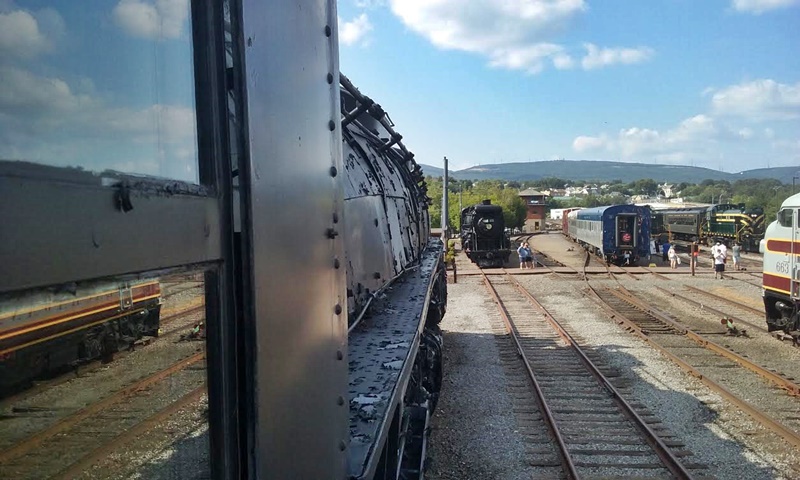
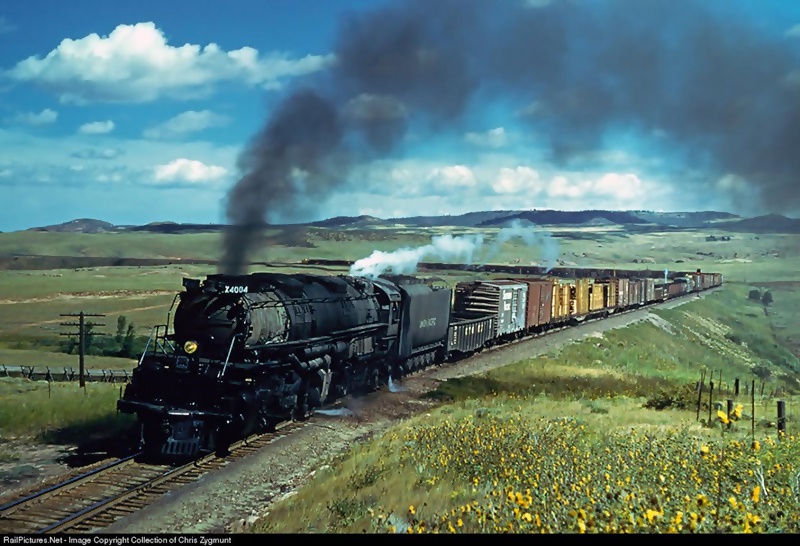
VETERANS DAY!
Tom Boylan snapped rebuilt SD60E NS 6920 the Norfolk Southern Veterans Heritage unit at Sandusky Ohio on Veterans Day November 11th, 2-16 as it led train NS 24Z She was originally CNW SD60 8014 built by EMD in August 1986.

Two CSX trains collide in Florida and derail; with two severely injured.
http://www.reuters.com/article/us-florida-train-idUSKBN13B1OR
Terry Redecker photographed the beautiful Kansas City Southern OCS train led be matching A-B-A F-units heading eastbound to Meridian Miss. on May 13th 2014, as it passed through Clinton, MS.
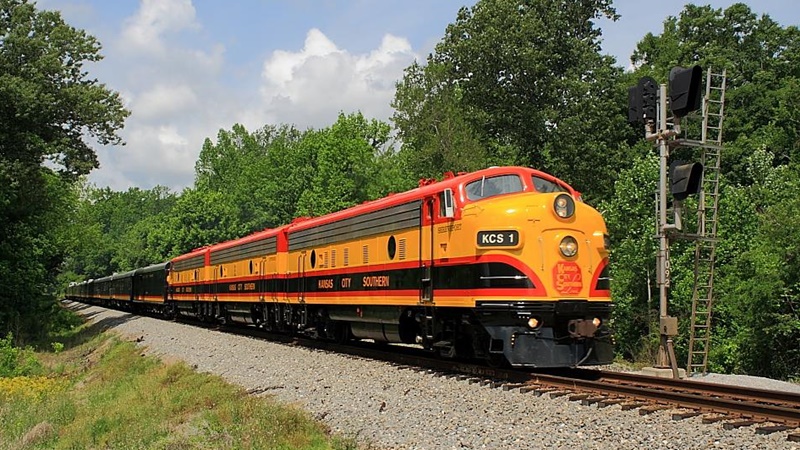
Ron Tilley shot NS 4000 (what many railfans call the Unofficial D&H Heritage Unit), was leading an NS train back in August 2016 on the former CP/D&H in Martins. PA.

Shawn Heller caught BNSF 1508 and 2767 switching a cut of tank cars at a plant in Kalama, Washington in early November 2016.
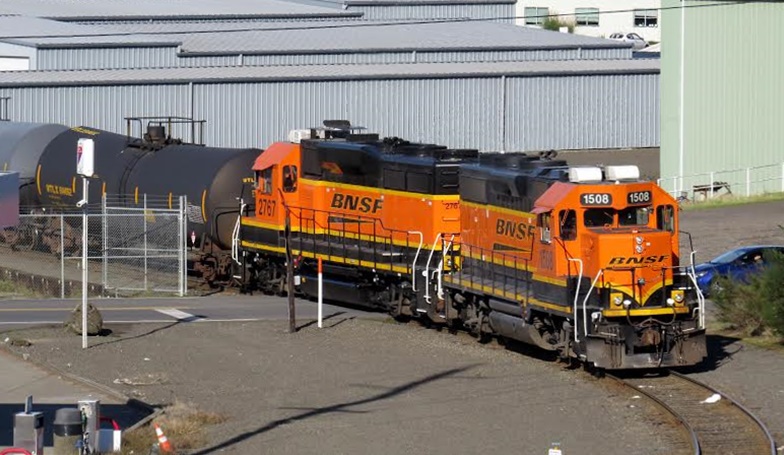
Rochelle, IL on October 13th, 2016, T.J. Cloke caught UP 519, a GP38-2 rebuilt to a GP38N. Note the slanted UNION PACIFIC lettering on the long hood!
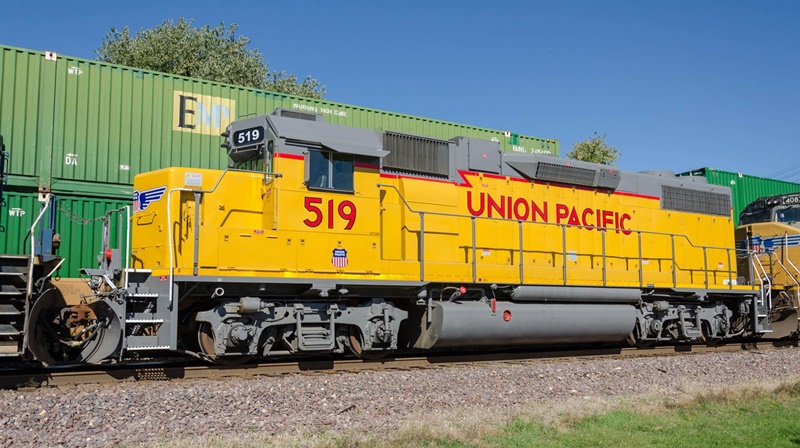
On October 18th, Dennis Weber clicked Amtrak train #8, with locomotives AMTK 16 and AMTK 134 passing Dresbach, MN.
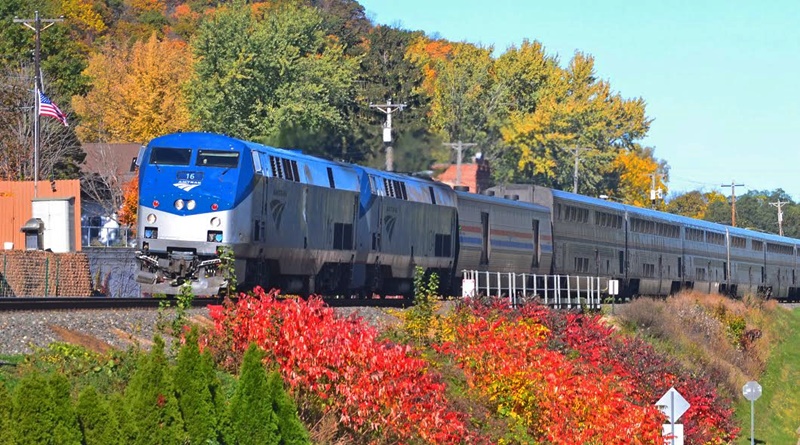
The same day he shot UP train LTA-42, with UP 1830 and UP 2196 at Dakota, MN.
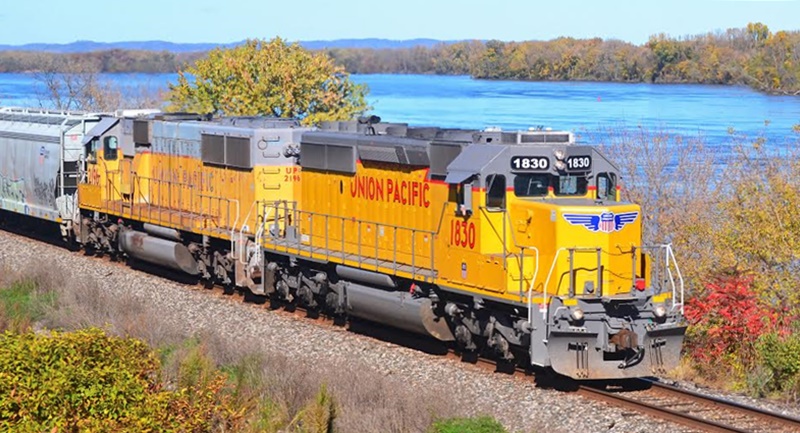
On October 10th 2016,, David Balko photographed RBMN 2530 and 2532, lettered as GP39RN's (both ex-ATSF GP30's), leading Reading & Northern train SBPI through the Stauffer Industrial Park in Taylor, PA. This is Davidís first CRO submission.
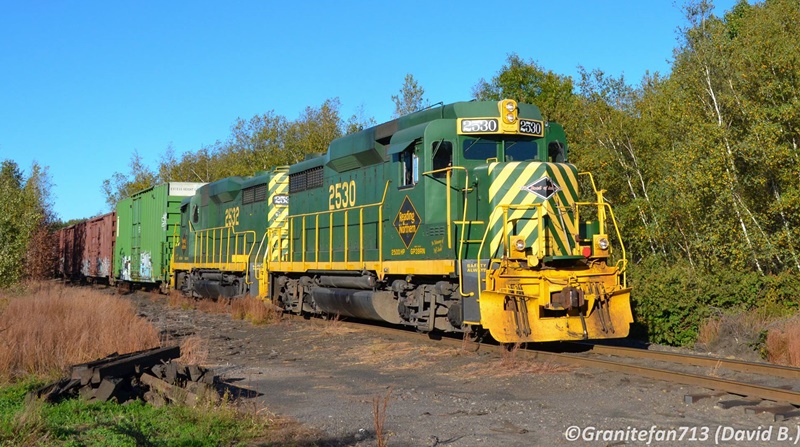
On October 21st Richard Roberts caught South Shore Freight GP38-2 (CSS 2006) in Michigan City, IN. The CSS&SB From South Bend to Chicago with Michigan City being there headquarters. This is Richardís first CRO submission.
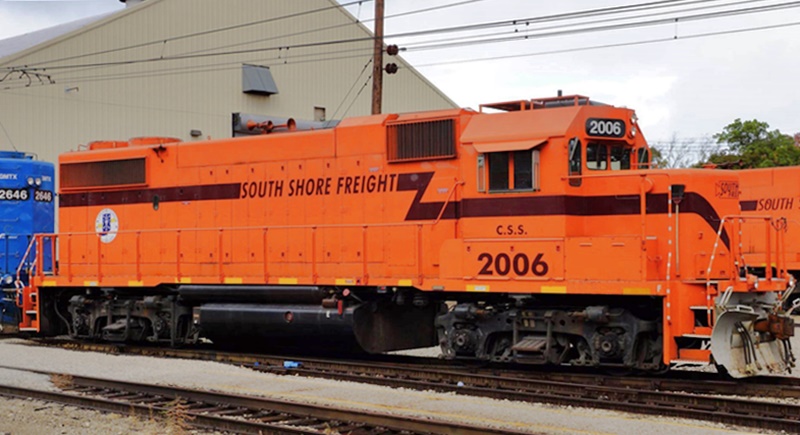
Brand new FXE ES45AH 4833 (AKA ES44ACi) in TFVM In mid-October! (Juan Lucca Malazzo).
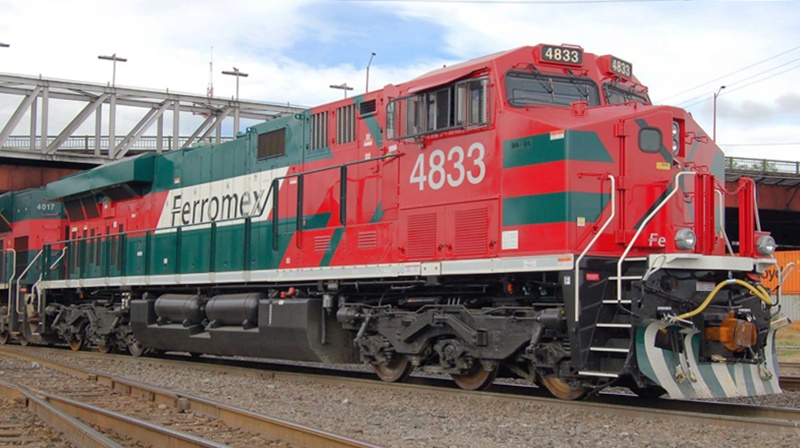
Tom Boylan caught Electro-Motive Tier 4 Demonstrators (EMDX 1609 and 1610) arriving at Willard, Ohio October 20th as both units were on CSX Train L389 heading westbound


The great New Haven McGuiness scheme lives! Tim Darnell took this great shot in October sunshine at Old Saybrook, CT on October 23d, 2016.
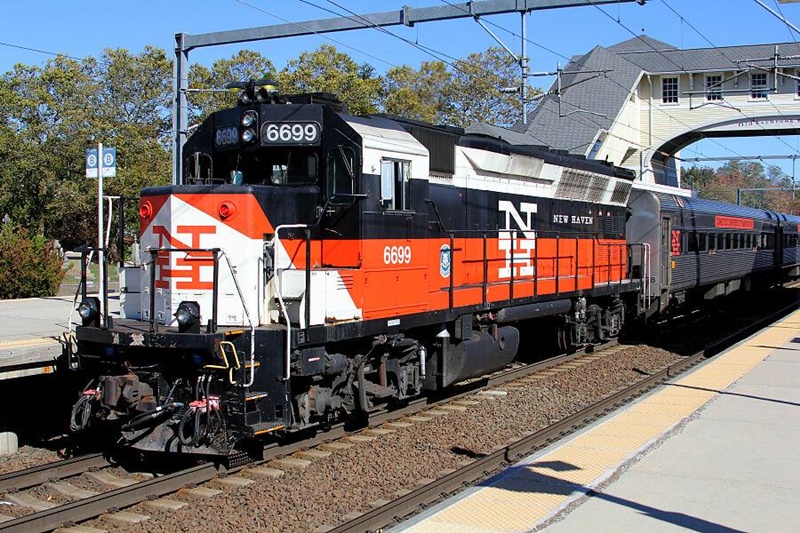
T.J. Cloke photographed GSLX 325 an EMD SW1 that works as a grain switcher now-a-days. He shot the photo in Upper Sandusky, Ohio. On October 17th, 2016. It was stored at National Lime and Stone in Carey, Ohio for some time and CSX H793 pulled it from there and took it began operating here just a few months ago Sister unit GSLX 384 is also an SW1, ex-L&N.

Sam Sponsellor shot North Star Steel ALCO S-5 864 at Bellevue, Ohio in early November As far as we understand, this locomotive is going to be repainted back into Boston and Maine colors at some point. These photos were taken at the railroad museum's coach yard, but the repaint decision rests with the owner.

Six classic EMD's lead BNSF's Chewelah Turn southbound near Deer Park with 105 cars on June 6th, 2015. The steep grades and tight turns of this stretch of former BN track prevent the use of bigger 6 axle engines and make for quite a scene 5 days a week. This local interchanges with the Kettle Falls International Railroad in Chewelah which takes these loads across the border into Canada. (George Li Photo).

George also submitted this recent shot of Eastside Freight Railroads (ex-Tacoma Rail, nee-Missouri Pacific) SW1200 EFRX 109 preparing to shove back to its only customer at the moment, Spectrum Glass outside of Woodinville, WA for what was supposed to be the last run. Much speculation has been surrounding this railroad's future as Spectrum Glass announcing an end to operation in the near future. A way to keep the operation alive is in the works but the rail-trails group within Snohomish County are gaining the upper hand. What happens in the next couple of months may create for quite the finale.
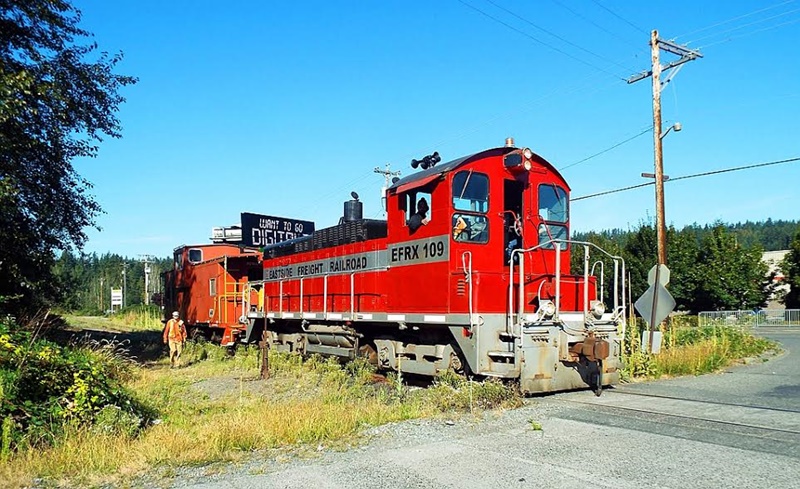
Rapid City, Pierre & Eastern RR locomotive power was shot by Cory Jakeway sitting on the south end of the rail yard in Rapid City, SD. These are Cory's very first CRO photo submissions.

RCP&E 3421 was shot on the former CP line by Cory Jakeway in his home town of Rapid City, Iowa in the summer of 2014. Canadian Pacific sold off this trackage to shortline operators Genessee & Wyoming three years ago.

Would you like to see your photos here?
Send us your USA Vignette photos.
The pride of the D&H Century fleet catching morning rays at the Oneonta, NY engine terminal. When these big Alco Centuries were new, they were among the best looking Alco road units on the planet. Even EMD fans had to have a smoke after seeing these hard traveling motors take on the grade to Ararat. This shot is from the late summer of 1964 by Donald Haskel.
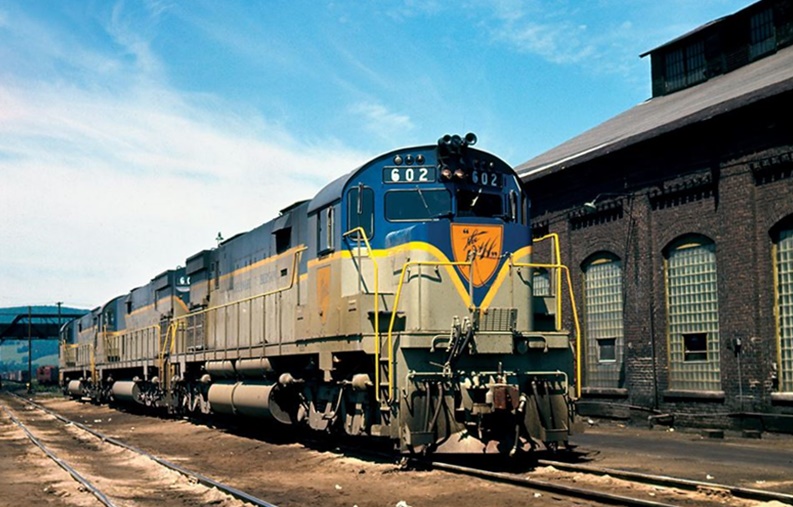
The Delaware and Hudson, a flag that took a long time falling. Four RS-3's just south of Oneonta. Summer of 1964 fourth unit sill in black.
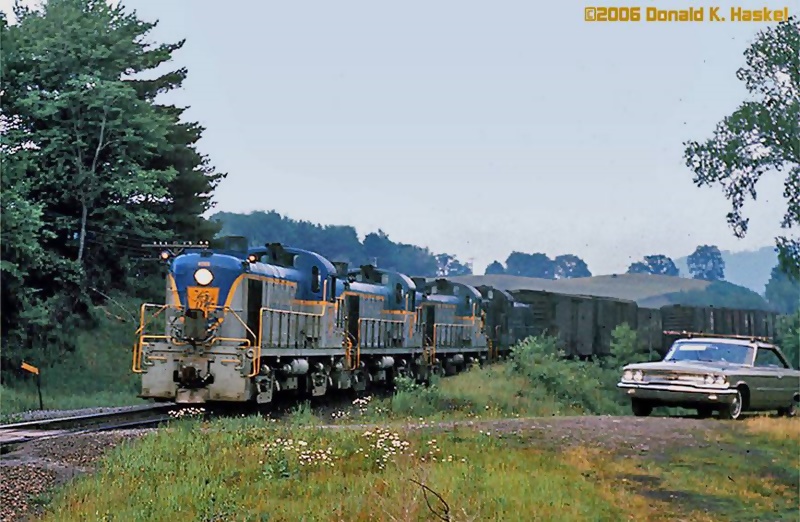
Marty Bernard took this great shot of his friend Roger Puta riding inside the cab of Erie-Lackawanna 2523 (a GE-built U25B). She was the lead unit of the ECE (East Coast Expediter) and is shown at the yard in Croxton, NJ on April 25, 1970.
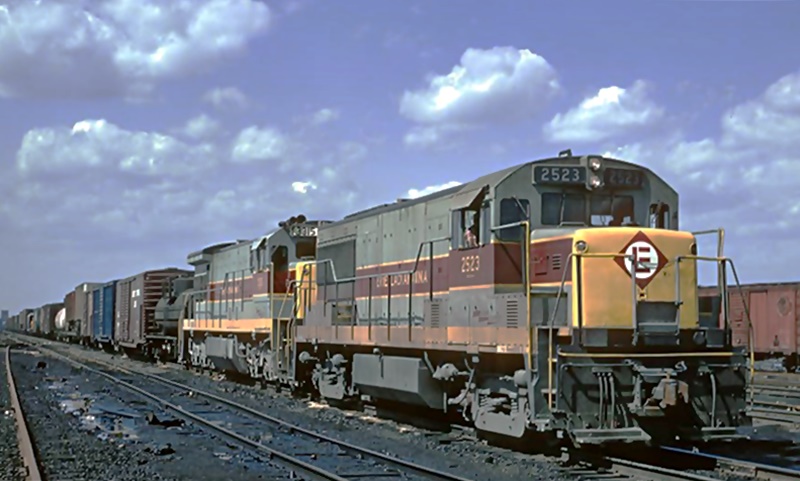
Mike Ray shot NS SD50 5439 and her black mates, sitting at Charleston, TN back in May 2011.

Mike also caught NS SD40-2 3329 wearing the MAERSK container corporation promotion paint scheme, not long before she got her black dip job.
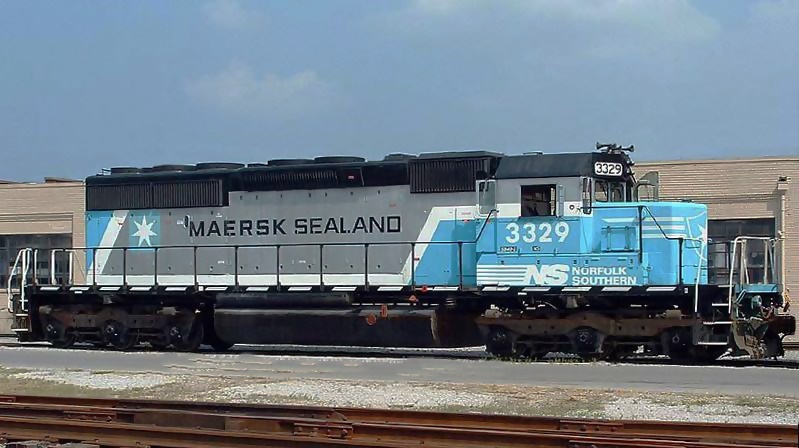
Donald Haskel shot this interesting angle of an ATSF EMD F7 coupled with the motive power for the evenings Santa Fe Chief sitting at Dearborn Station in Chicago IL in July 1965. Santa Fe was a clean smooth operating railroad right up until the end.
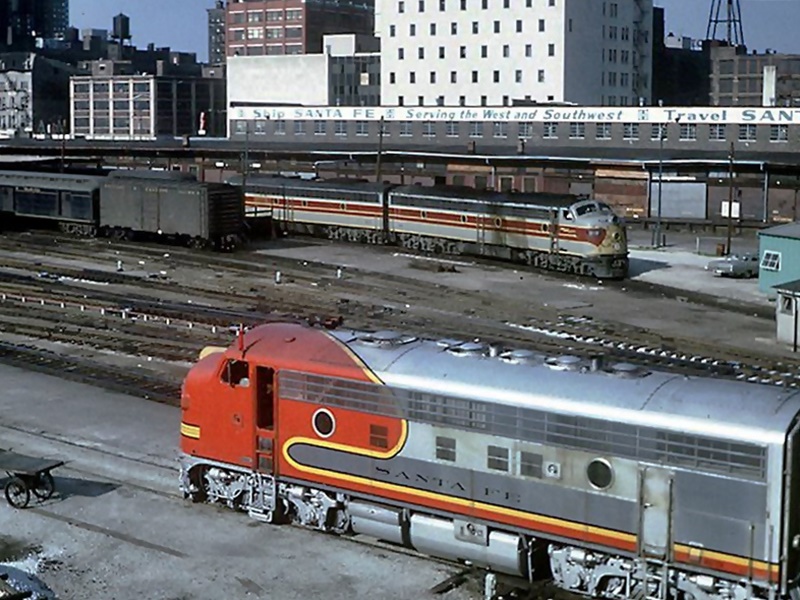
ATSF F45 5976 looks lovely as she sits in Barstow, California on a wam day on November 29th, 1991. (John C. Benson photo).

Click HERE to Submit Photos to South of the Border
Copyright CRO December 2016





